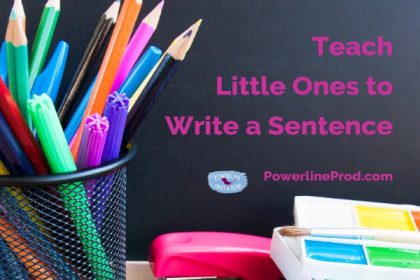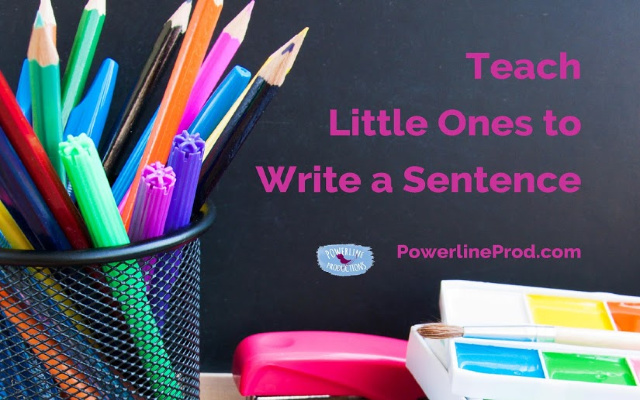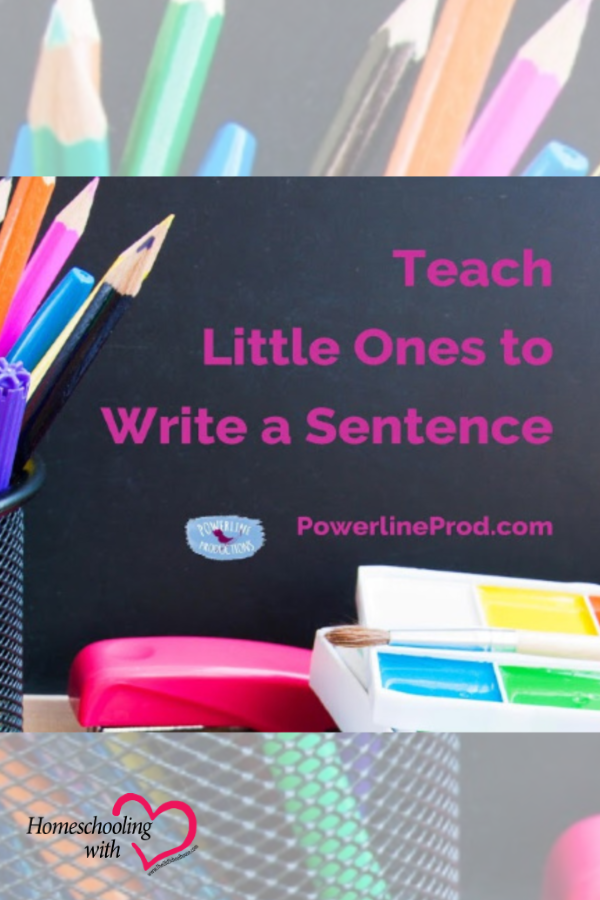Teach Little Ones to Write a Sentence


What fun it is to teach little ones to write! More than fun, learning to write a basic sentence is a foundational skill that will be built on over many years of homeschooling.
Enjoy Simple Sentences Together
One of the things I finally learned (probably on child #4) is that the more children experience what you will require them to do next, the easier it will be. So before writing an essay, we read lots of essays. Before writing a poem, we read lots of poems. You know where I’m going. Before learning to write a sentence, spend lots of time together looking at simple sentences. Children’s picture books or early readers are a great place to find these sentences. Simply say, “Look, here is a sentence. You will be learning to write a sentence next week. Let’s look at these fun sentences!” Be sure to point out the way they start with a capital letter, end with a period or question mark, include a noun and verb, and have a complete thought.
Now, it’s time to pull out a white board and some dry erase markers. I like to start by dictating sentences to my child and then going over the ingredients together. Then I make a list of some sentences mixed up with some non-sentences. My child decides which are sentences and which are not. Finally, my little lamb dictates sentences to me and I write them on the white board.
This process takes several months and is well worth the time. We don’t rush through it. We stick with it until my little one is clear on what makes a sentence a sentence and how to write a clear one.
Here are the ingredients of a sentence.

Start with a Capital Letter
Point out to your child in several different books that all sentences start with a capital, or big, letter. Capital letters work like a green light telling us to drive on to the sentence.
End with a Punctuation Mark
Show your little one that each sentence in their favorite book ends with a period, question mark, or exclamation point. Those things are called a punctuation mark and work just like a stop sign.
Include a Noun
Naming words, or nouns are everywhere. We go on noun hunts all over the house. Then we explore books to see that each sentence has a noun. Our own sentences will have nouns, too.
Include a Verb
Action words, or verbs, tell us what the noun is up to. What is that noun doing? That’s how we find most of our action words when we explore sentences.
Share a Complete Thought
A sentence is a special present with a message inside. Is the message clear? If it is a not a complete thought, it won’t be clear. “Tom went.” leaves us confused. Tom went where? We like to write down sentences that do not complete a complete thought and turn them into sentences that do.
I have found investing a long time in teaching my children to write a sentence makes a big difference in their writing later on. It’s one of those foundational things.
How about you? How do you teach your children to write a sentence in the early years?
Until next time, Happy Homeschooling,
Warmly,
Meredith Curtis
Meredith Curtis, homeschooling mom, writer, speaker, and publisher, loves to encourage families in their homeschooling adventure. She is the author of Communication 101: Essays & Speeches, American Literature & Research, and Who Dun It Mystery Literature & Writing Course(all high school one-credit English courses). You can check out her books, curricula, unit studies, and Bible studies at PowerlineProd.com . Free Reading Lists for all ages are available at JSHomeschooling.com. Read her blogs at MeredithCurtis.com (http://www.meredithcurtis.com/blog ) and PowerlineProd.com and listen to her podcast at Finish Well Radio











































